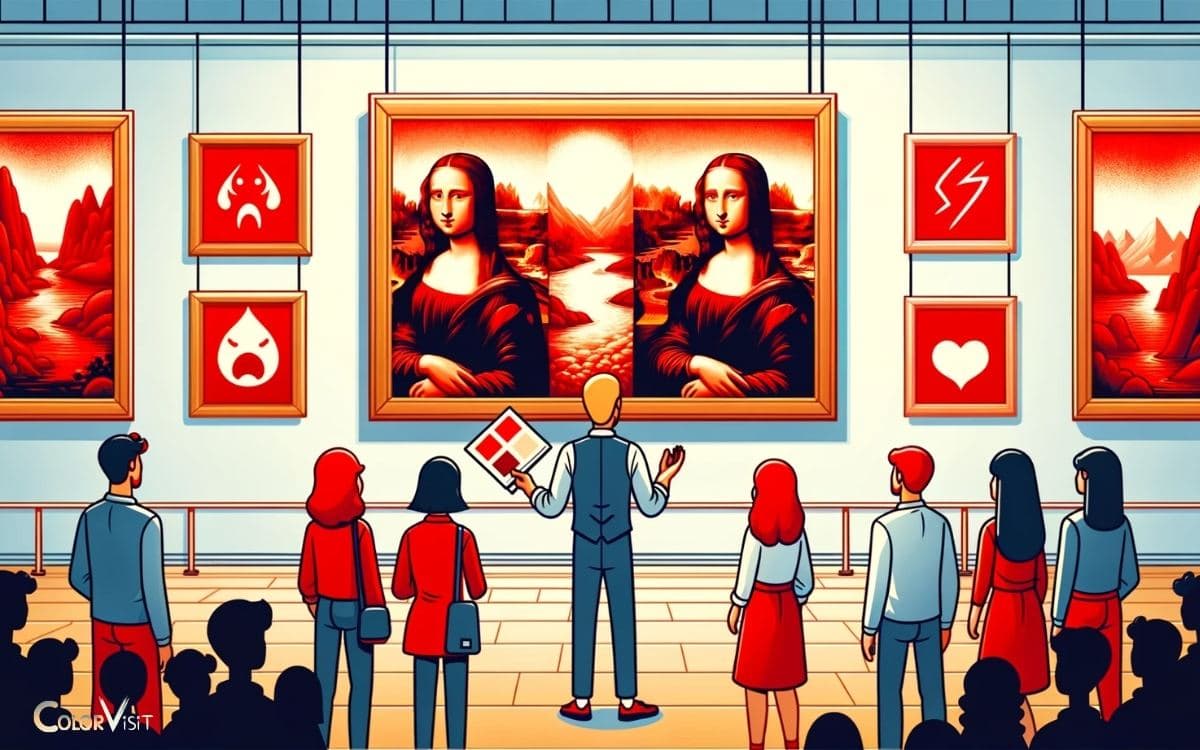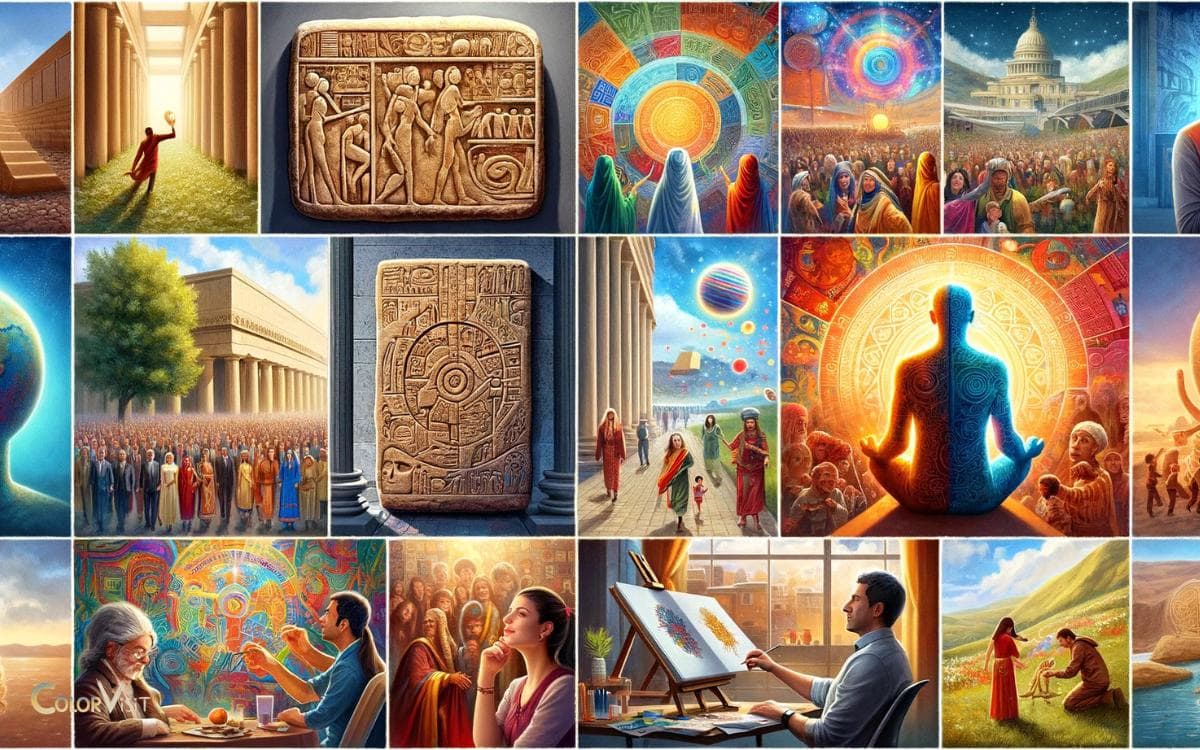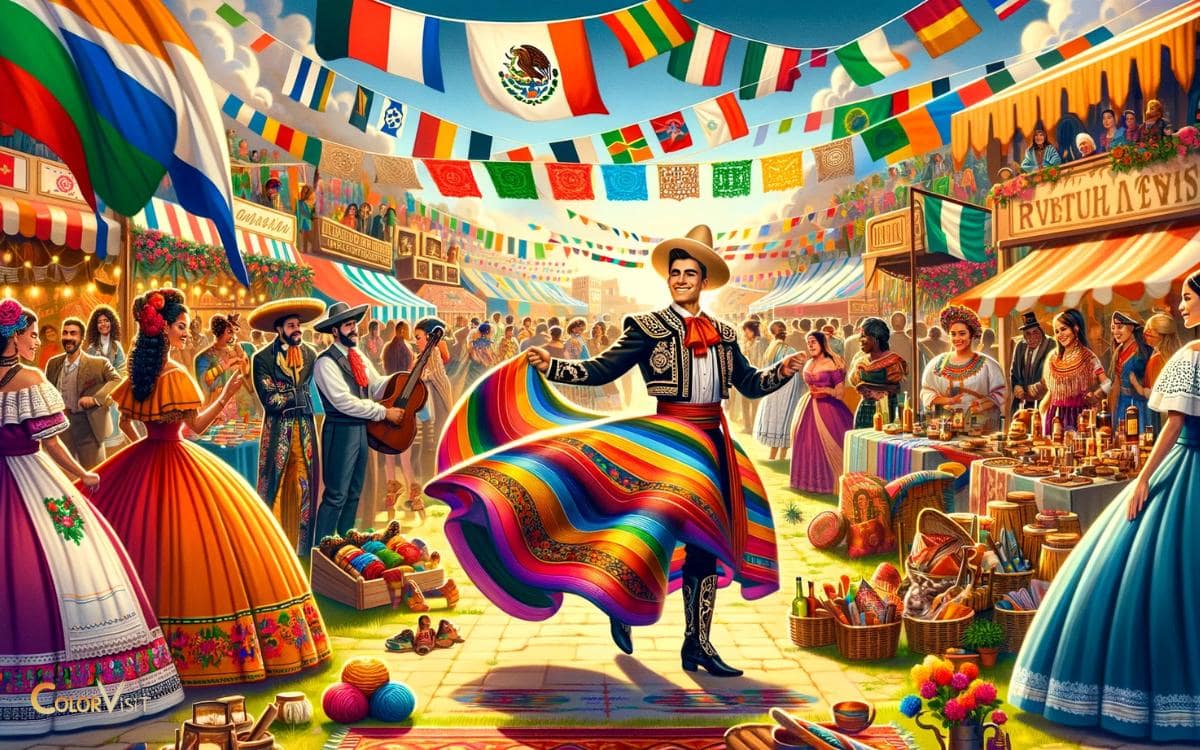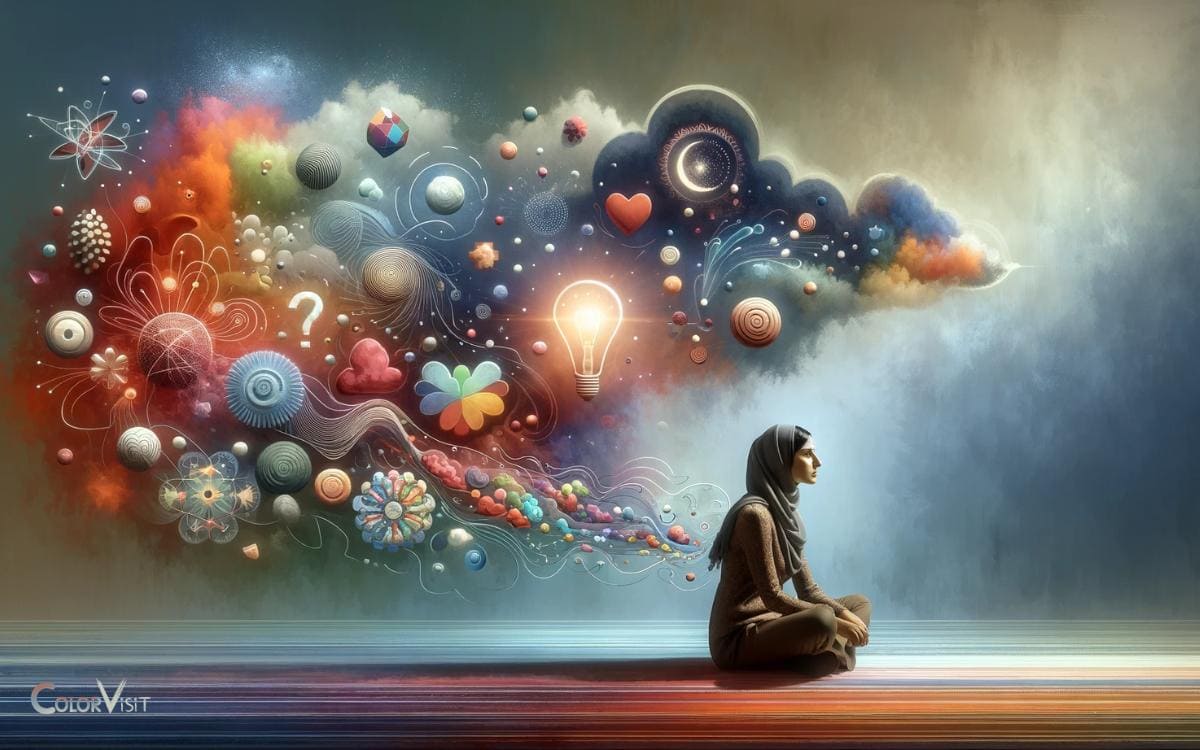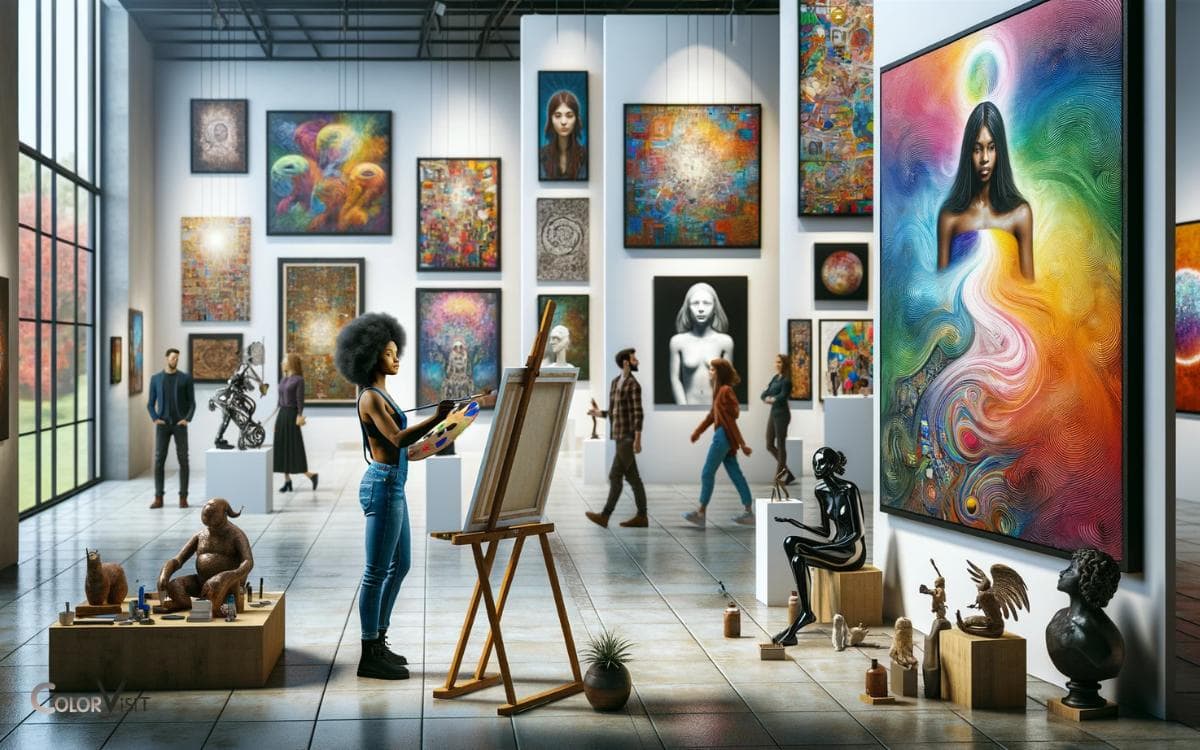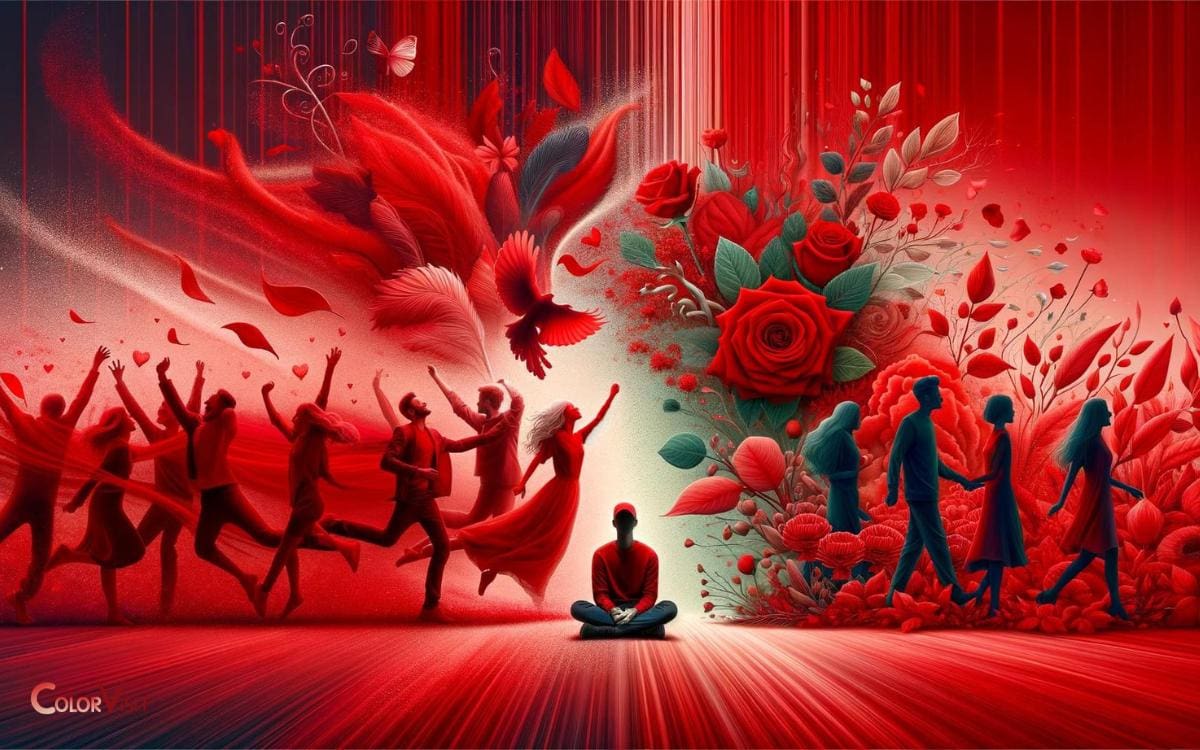Color Red Meaning in Art: Passion!
In art, the color red is a dynamic color that represents love, passion, power, and anger. It’s an attention-grabbing and energetic color that can evoke strong emotions.
Red is a primary color, meaning it’s one of the hues that can’t be created by mixing other colors.
Artists and designers can use red to draw attention to specific details, evoke emotions, or create emphasis.
In different cultures, red can have various meanings which can influence how it’s utilized in art.
In essence, the color red has a significant impact on art, dramatically influencing a piece’s overall mood and emotion.
Its versatility, from symbolizing love, passion, anger, and power, makes it a potent tool in the hands of artists.
The cultural implications of red add another layer of depth to its usage, making it even more fascinating.
Key Takeaway
Historical Significance
The historical significance of the color red in art can be traced back to ancient civilizations’ use of red pigments for religious, symbolic, and decorative purposes.
- In ancient Egypt, red ochre was used in artistic depictions of deities and in the afterlife, symbolizing life and vitality.
- The Romans used red in frescoes and mosaics to denote power, wealth, and courage. In Chinese culture, red symbolized good luck, joy, and prosperity, and was widely used in art and artifacts.
- The color red has been a consistent presence throughout art history, representing diverse and often contradictory meanings across different cultures.
Its enduring significance lies in its ability to evoke powerful emotions, convey social and religious messages, and capture the human imagination, making it a fundamental element of artistic expression.
Cultural Symbolism
Drawing on its rich historical significance, red continues to hold deep cultural symbolism in art across various societies, representing a myriad of nuanced meanings and traditions.
- In Chinese culture, red symbolizes good luck, prosperity, and happiness, often used in traditional weddings and during the Lunar New Year.
- In Indian culture, red is associated with passion, love, and fertility.
- In South African art, red represents the political movement and the sacrifices made for freedom.
- In Western art, red has been linked to emotions such as love, anger, and power, as seen in the works of artists like Mark Rothko and Piet Mondrian.
The cultural significance of red in art is a testament to its ability to transcend geographical boundaries and communicate diverse narratives, making it a timeless and universal symbol in the art world.
Psychological Associations
Red holds significant psychological associations in art, influencing viewers’ emotions and perceptions through its powerful and evocative presence.
- As the most emotionally intense color, red is often associated with passion, energy, and action.
- It has the ability to increase heart rate and create a sense of urgency, making it a potent tool for artists to convey strong emotions or command attention.
- Red is also linked to primal instincts and survival, triggering a visceral response in viewers. Additionally, it can evoke feelings of love and warmth, but also danger and aggression.
The psychological impact of red in art is profound, as it has the potential to elicit a wide range of emotional and psychological responses, making it a captivating and versatile element in artistic expression.
Artistic Representations
Exploring the use of red in art involves examining its impact on artistic compositions and visual storytelling through the manipulation of color.
When considering artistic representations of red, it’s essential to recognize the diverse ways in which artists utilize this bold hue to convey meaning and evoke emotions.
Some key points to consider include:
- Symbolism: Red is often used symbolically in art to represent concepts such as love, passion, power, or danger.
- Mood and Atmosphere: The strategic use of red can significantly influence the mood and atmosphere of a piece, whether it be through creating a sense of urgency or infusing warmth and vitality.
- Visual Hierarchy: Red can be employed to direct the viewer’s attention within a composition, serving as a focal point or guiding the eye through the artwork.
- Cultural Interpretations: The interpretation of red in art can vary across different cultures, carrying unique symbolism and connotations that enrich the visual narrative.
Impact on Emotions
The use of red in art elicits powerful emotional responses, shaping the viewer’s perception and engagement with the artwork.
Red is known to evoke a wide range of emotions, from passion and love to danger and anger.
In art, the impact of red on emotions is carefully manipulated by artists to create specific effects on the audience.
The table below illustrates the various emotions that the color red can evoke in art:
| Emotion | Description | Example |
|---|---|---|
| Passion | Evokes strong feelings of love and desire | A red rose in a romantic painting |
| Power | Symbolizes strength, energy, and determination | A bold red in a political poster |
| Danger | Represents warning, urgency, and fear | Red flames in a dramatic scene |
| Anger | Conveys aggression, frustration, and intensity | A figure cloaked in red in a protest painting |
The strategic use of red in art can significantly influence the emotional response and overall interpretation of the artwork.
Conclusion
The color red in art holds a deep historical significance, cultural symbolism, and psychological associations, impacting emotions in powerful ways.
Its bold and vibrant presence commands attention and evokes strong emotions of passion, love, and energy.
Red has been used by artists to convey intensity, power, and vitality, leaving a lasting impression on the viewer.
Its rich and complex meanings make it a significant and impactful color in the world of art.
